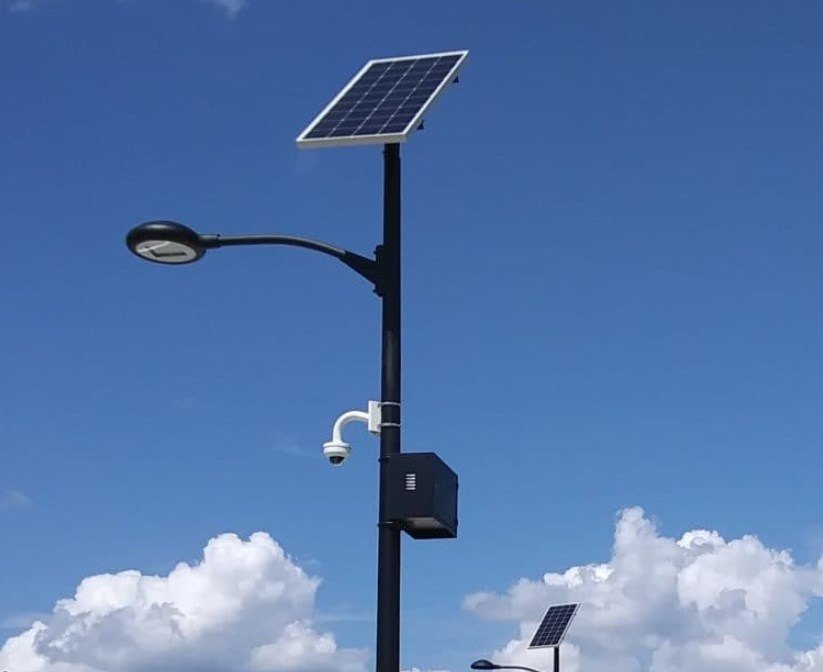The Sun-Powered Glow: Exploring the Mechanics of Solar Panel LED SystemsPosted by Stephen Shickadance in Most Popular. Industry News. Solar FAQs. Solar Lighting Design.As the world shifts towards sustainable and energy-efficient solutions, the marriage of solar power and LED lighting systems has emerged as a shining example of innovation. Solar panel LED systems offer a smart and eco-friendly way to illuminate spaces, whether it's outdoor pathways, gardens, residential areas, or even urban landscapes. In this article, we delve into the intricate mechanics of solar panel LED systems, shedding light on how they work and their benefits for a greener tomorrow.
The Components at PlayA solar panel LED system comprises several essential components that work seamlessly together to harness solar energy and convert it into efficient lighting. These components include: Solar Panels: At the heart of the system, solar panels capture sunlight and convert it into electrical energy. Photovoltaic cells within the panels generate direct current (DC) electricity when exposed to sunlight. Batteries: To store excess energy generated during the day, solar panel LED systems are equipped with rechargeable batteries. These batteries ensure a consistent power source even during nighttime or cloudy periods. Charge Controller: Acting as the system's brain, the charge controller regulates the flow of electricity between the solar panels and the batteries. It prevents overcharging and ensures optimal battery performance and longevity. LED Lights: Light Emitting Diodes (LEDs) are the light sources in the system. LED lights are highly energy-efficient, durable, and emit bright illumination. They consume significantly less energy compared to traditional incandescent or fluorescent lights. Lighting Control Unit: This component manages when and how the LED lights turn on and off. It may include timers, sensors, or manual controls for adjusting lighting levels according to specific needs. The Solar-Powered Illumination ProcessSolar Energy Harvesting: During daylight hours, solar panels absorb sunlight and convert it into electricity using the photovoltaic effect. This process involves electrons in the photovoltaic cells being excited by photons from the sunlight, generating an electrical current. Energy Storage: Excess electricity generated by the solar panels is directed to the rechargeable batteries via the charge controller. The batteries store this energy for use during low light conditions. LED Lighting Activation: As darkness falls, the lighting control unit detects reduced sunlight and activates the LED lights. The energy stored in the batteries powers the LEDs, creating a consistent and efficient source of illumination. Energy-Efficient Illumination: LED lights emit bright, directional light that is ideal for various applications. They are renowned for their efficiency, emitting more light per watt of energy consumed compared to traditional lighting options. The Benefits of Solar Panel LED SystemsEnergy Efficiency: Solar panel LED systems are highly efficient, utilizing renewable solar energy to power energy-efficient LED lights. This reduces reliance on conventional power sources and lowers energy bills. Sustainability: Solar panel LED systems have a minimal carbon footprint as they do not rely on fossil fuels. By utilizing sunlight, they contribute to reducing greenhouse gas emissions. Low Maintenance: Once installed, solar panel LED systems require minimal maintenance. LED lights have a longer lifespan and are less prone to burnout, reducing the need for frequent replacements. Cost Savings: While initial installation costs may be higher than traditional lighting, solar panel LED systems offer long-term savings due to reduced energy consumption and lower maintenance requirements. Versatility: Solar panel LED systems can be installed in a variety of settings, from remote locations to urban environments. They provide customizable lighting solutions that cater to specific needs. In conclusion, solar panel LED systems showcase the synergy between renewable energy and efficient lighting technology. By tapping into the power of the sun and harnessing it to illuminate spaces, these systems exemplify sustainable innovation that contributes to a brighter, greener, and more energy-conscious future.
Most Popular
Industry News
Solar FAQs
Solar Lighting Design
|
ArchivesNo Archives Categories
Want More Info? |
LATEST NEWS & ARTICLES

